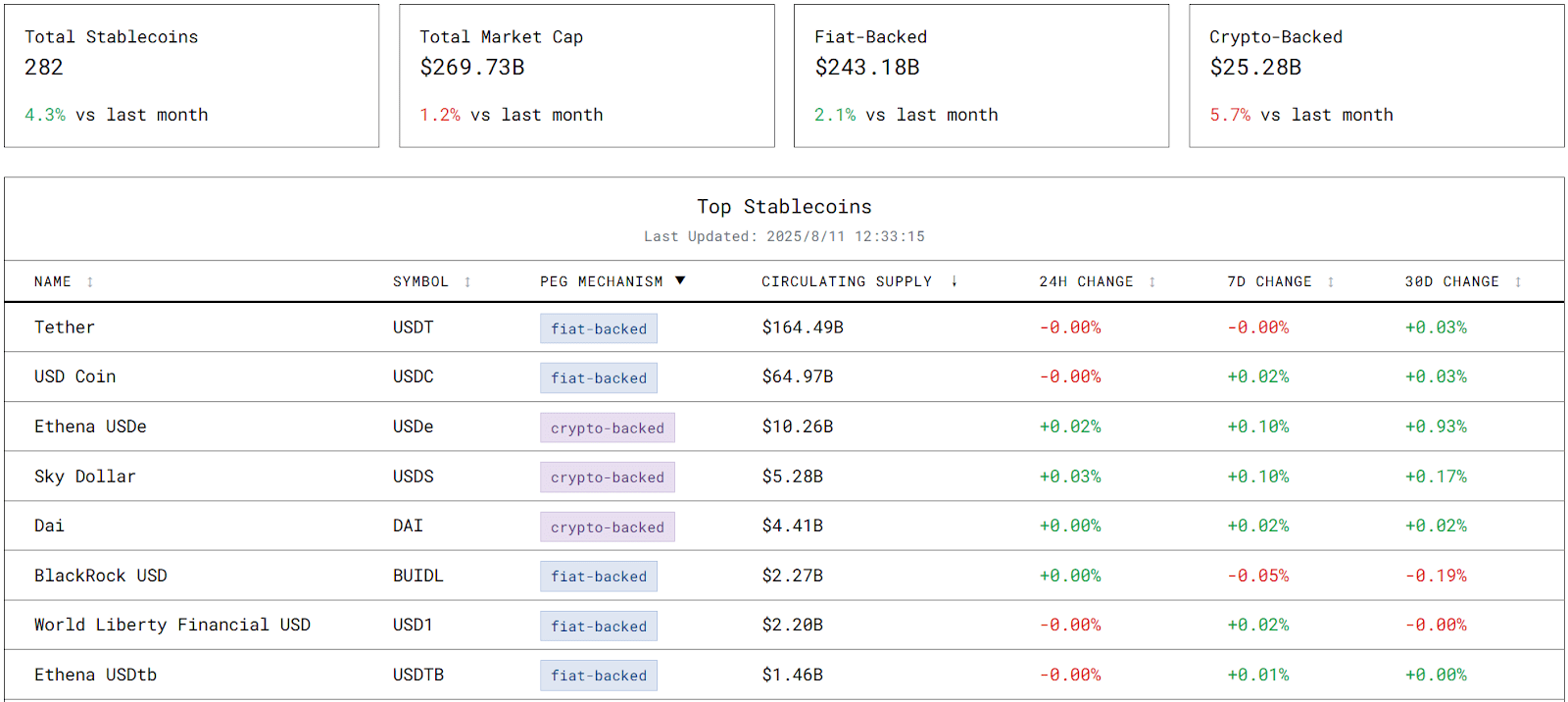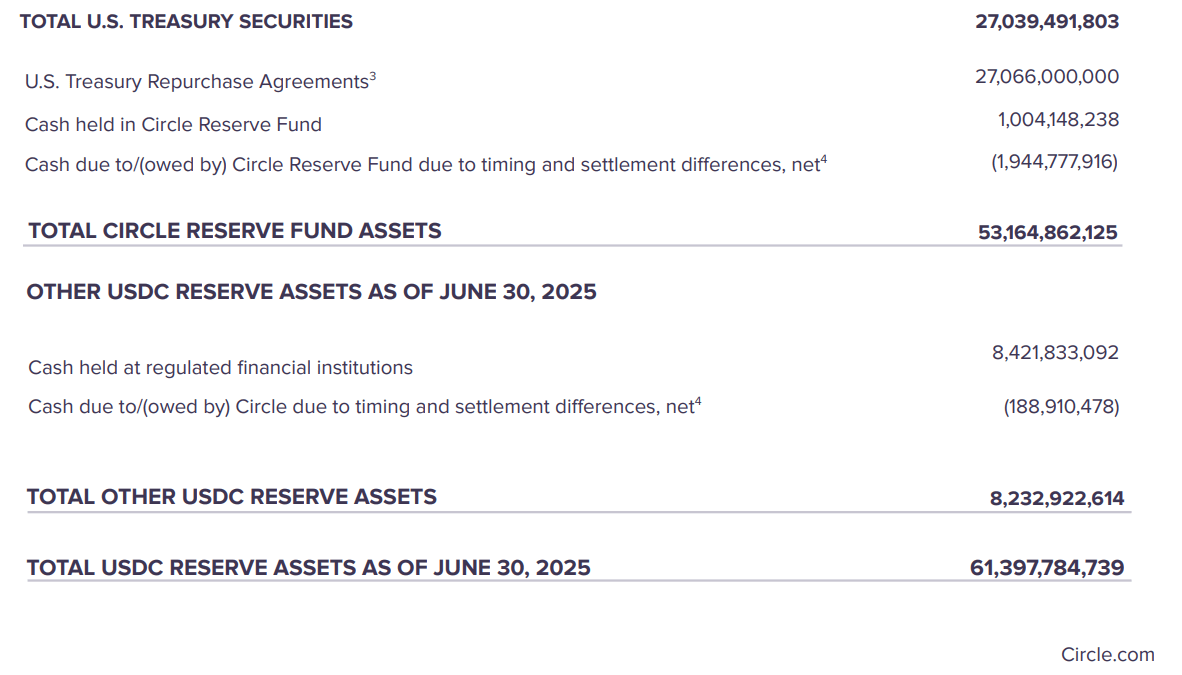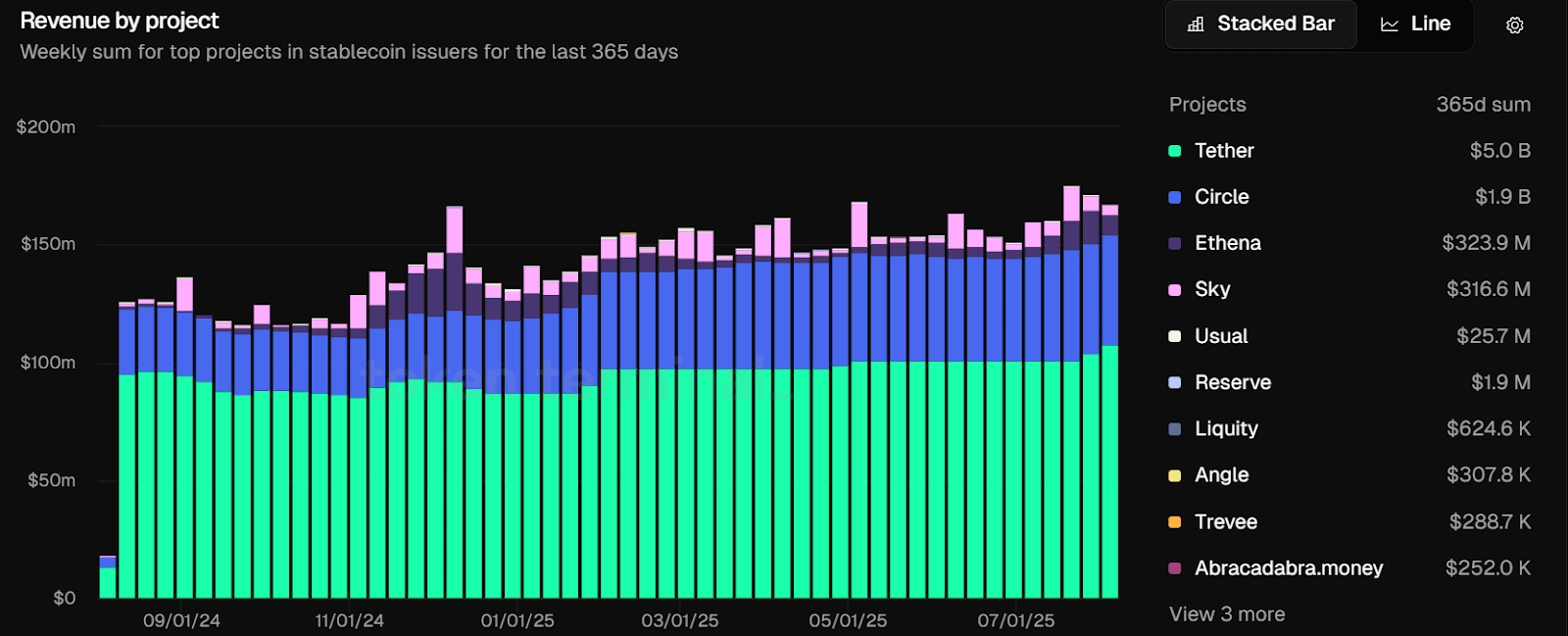Author: Dingdang (@XiaMiPP)
Recently, Tether's latest disclosed data shows that its holdings of U.S. Treasury bills have surpassed $120 billion, a number that not only exceeds the holdings of sovereign countries like the UAE and Germany but also elevates a stablecoin issuer to the position of the 18th largest holder of U.S. Treasury bonds globally.
For those familiar with the crypto market, this number is astonishing; in the eyes of traditional finance, it resembles a structural 'financial tectonic movement.' Some believe that stablecoin issuers like Circle and Tether are consuming more U.S. Treasury bonds than most countries, which could reshape the U.S. economy.
In the eyes of supporters, this is a new extension of dollar hegemony: through on-chain liquidity and global payment networks, stablecoins provide unprecedented leverage for the dollar's dominant position in international trade and digital assets. However, critics warn that even if stablecoins represent only a small portion of the entire market, they could lead to financial instability in the banking sector, as stablecoins may siphon funds from bank deposits, which are essential liquidity for loans, thus threatening the credit system.
The prosperity of the stablecoin market and its oligopolistic structure.

The stablecoin market is currently experiencing a liquidity boom. According to data from stablecoins.asxn.xyz, the total global market capitalization of stablecoins has soared to $269.73 billion, hitting a historic high. Among them, Tether's USDT leads with a market capitalization of $164.49 billion, followed by Circle's USDC at $64.97 billion, together accounting for over 85% of the market share, forming a clear oligopoly.
Interestingly, under the highly concentrated landscape, the market's innovative vitality has not been suppressed. Since 2024, the total number of stablecoins has increased to 282, with new categories continuously emerging from on-chain payments to cross-border settlements.

In terms of market capitalization, USDT steadily rises, while USDC has shown a slowdown in growth since May 2025, and the decentralized stablecoin USDe recorded a monthly increase of over 75% in July, becoming a 'dark horse' that disrupts the landscape.

USDT and USDC: Two routes, two logics.
While both USDT and USDC promise a 1:1 peg to the dollar, they have chosen entirely different paths in terms of development trajectory and brand positioning.
Tether (USDT): The market-driven controversial pioneer.
USDT, issued by Tether Limited, registered in Hong Kong and headquartered in Switzerland, dominates the stablecoin field with a market-driven approach. With a wide range of trading pairs and enormous circulation, USDT has become the most widely used stablecoin in the crypto market, even maneuvering adeptly in gray areas. However, its reserve transparency has long been criticized. In October 2021, Tether was fined $41 million by U.S. regulators for reserve issues. Although it regularly publishes reserve reports, the insufficiency of audit frequency and details still leaves the market questioning its trustworthiness.
Circle (USDC): A compliant and robust choice.
In contrast, USDC is taking a compliance route. Issued by the Centre Alliance jointly founded by Circle and Coinbase, Circle operates as a financial technology company regulated by U.S. financial authorities (FinCEN) and publishes reserve reports audited by third-party accounting firms (such as Grant Thornton) each month to prove its dollar reserves are sufficient. Although USDC's market size is not as large as USDT's, it is favored in decentralized finance (DeFi) and institutional trading for its high transparency and compliance.
This is not only a difference between two products but also a strategic bet on the future: one bets on market efficiency and liquidity, the other on institutional trust and compliance moats.
The 'money-absorbing' logic of stablecoins: zero-cost deposits and huge profits.
The business model of stablecoin issuers is the clearest and most straightforward in the crypto industry, centered around zero-cost deposits and stable interest rate spreads. When a user exchanges $100 for 100 stablecoins, that $100 becomes the issuer's reserve. Since stablecoins do not pay interest to users, the issuer essentially receives a zero-cost deposit. They then invest these funds in highly liquid, low-risk assets like U.S. Treasury bonds and repurchase agreements to earn stable interest returns.
With a funding pool of hundreds of billions, this model has turned into a continuously operating profit machine: stable returns, controllable risks, making it one of the most predictable business models in the crypto industry.
For instance, Tether's asset portfolio has over 80% in cash equivalents like U.S. Treasury bonds, 5% in Bitcoin, with the remainder distributed among corporate bonds, precious metals, and secured loans. By the second quarter of 2025, Tether's holdings of U.S. Treasury bonds reached $127 billion (direct holdings of $105.5 billion and indirect holdings of $21.3 billion), surpassing South Korea's $124.2 billion, ranking 18th globally.
The significance of this holding structure lies not only in the profitability of the stablecoin market but also in its position in the dollar liquidity cycle. Stablecoins provide global users with instant access to dollars while channeling these funds back to the U.S. Treasury bond market, forming a 'dollar-on-chain-Treasury bond' circulation pathway. This pathway enhances global demand for U.S. Treasury bonds but may also amplify liquidity fluctuations in extreme cases, as the redemption demand for stablecoins is more instantaneous and concentrated than traditional bank deposits.
Circle adopts a more conservative asset allocation: 44% in U.S. Treasury bonds, 44% in Treasury repurchase agreements, and 15% in bank deposits. As of June 30, 2025, its total amount in Treasury bonds and repurchase agreements was approximately $54 billion. (-3% represents temporary differences in transactions or settlements, which usually balance out in the short term and do not pose a significant threat to overall reserve stability.) This configuration aligns more closely with the risk management logic of traditional financial institutions, indicating a relatively stable balance between short-term payout and interest income.

Financial performance: The other side of profit.
According to financial data from the second quarter of 2025, Tether's total assets reached $162.57 billion, total liabilities (token issuance) were $157.11 billion, with a net asset value of approximately $5.47 billion, and shareholder equity remained stable. In just the second quarter, Tether achieved a net profit of $4.9 billion, with cumulative profits of $5.7 billion in the first half of the year, of which $3.1 billion came from recurring profits and $2.6 billion from the valuation increase of gold and Bitcoin holdings. This indicates that a considerable proportion of its profit structure relies on asset price fluctuations, and although the current market environment is favorable, valuation gains may shrink rapidly during a cyclical reversal.
Circle exhibits more 'bank-like' financial characteristics—by June, total assets were $61.39 billion, total liabilities were $61.33 billion, with assets slightly exceeding liabilities. According to data from tokenterminal.com, protocol revenue reached $1.9 billion in the past year, mainly from interest income from Treasury bonds and repurchase agreements, with minimal reliance on highly volatile assets. This model is highly attractive in the current high-interest-rate environment, but if the U.S. enters a rate-cutting cycle, income pressure may rise.

On July 18, 2025, President Trump signed the GENIUS Act, establishing new boundaries for the stablecoin industry. This legislation marks a turning point for stablecoins from marginal innovation to mainstream finance. It is not only a response to industry expansion but also reflects the U.S. intention to integrate stablecoins into the strategic framework of a 'digital dollar.'
For compliant issuers like Circle, the act signifies an expansion of market space; for Tether, the advantages of globalized markets may face challenges due to pressure on reserve transparency and compliance standards. Regardless of the final outcome, stablecoins are becoming an extension tool of dollar hegemony in the digital age, also introducing new variables into the global financial system.


